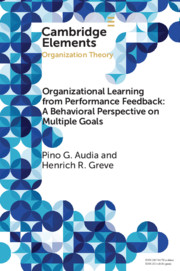Element contents
Organizational Learning from Performance Feedback: A Behavioral Perspective on Multiple Goals
Published online by Cambridge University Press: 28 January 2021
Summary
Keywords
Information
- Type
- Element
- Information
- Series: Elements in Organization TheoryOnline ISBN: 9781108344289Publisher: Cambridge University PressPrint publication: 18 February 2021
References
Accessibility standard: Unknown
Why this information is here
This section outlines the accessibility features of this content - including support for screen readers, full keyboard navigation and high-contrast display options. This may not be relevant for you.Accessibility Information
- 69
- Cited by
